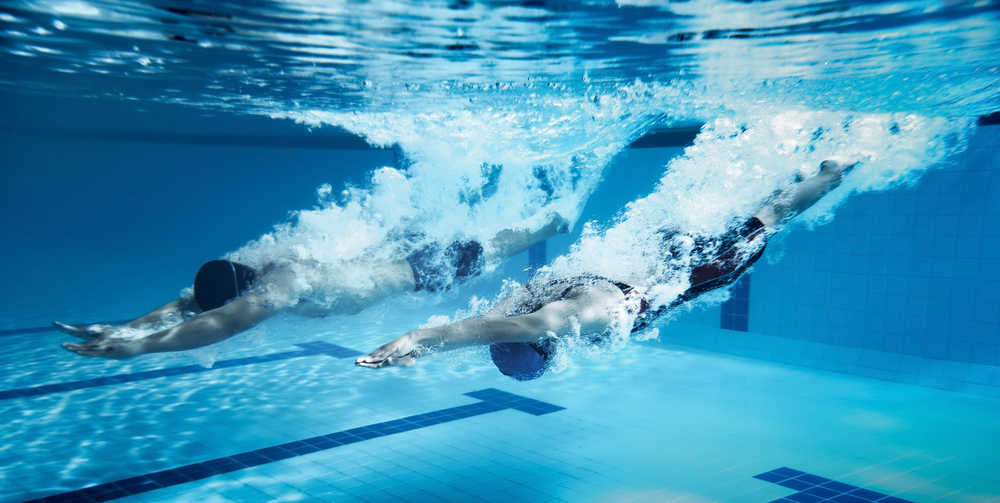Introduction:
Competitive swimming is a demanding sport that requires dedication, perseverance, and a strategic approach to training. For aspiring swimmers aiming to reach the podium, it’s essential to develop a comprehensive training regimen that encompasses both physical conditioning and mental preparation. In this blog, we’ll explore some key training tips to help aspiring competitive swimmers excel in the pool and achieve their goals.
1. Establish Clear Goals:
Before diving into training, it’s crucial for aspiring competitive swimmers to establish clear and achievable goals. Whether it’s improving personal best times, qualifying for a championship meet, or winning a medal, having specific goals provides swimmers with direction and motivation. Break down long-term goals into smaller, manageable milestones to track progress and stay focused on the path to success.

2. Develop a Structured Training Plan:
A structured training plan is essential for maximizing performance and minimizing the risk of injury. Work with a qualified coach to develop a personalized training program that includes a balance of technique-focused drills, endurance training, strength conditioning, and recovery sessions. Incorporate a variety of training modalities, such as swim workouts, dryland exercises, and flexibility training, to ensure overall fitness and performance improvement.
3. Focus on Technique:
The technique is paramount in competitive swimming, as even small adjustments can lead to significant improvements in performance. Spend dedicated time during each training session focusing on stroke technique, starts, turns, and finishes. Utilize video analysis and feedback from coaches to identify areas for improvement and make necessary adjustments. Consistent refinement of technique will lead to greater efficiency in the water and faster race times.
4. Build Endurance:
Endurance is a key component of success in competitive swimming, particularly in longer-distance events. Incorporate interval training, distance sets, and aerobic workouts into your training program to build cardiovascular fitness and muscular endurance. Gradually increase training volume and intensity over time to challenge your limits and improve overall stamina. Remember to include rest and recovery days in your training schedule to allow your body to adapt and recover effectively.
5. Enhance Strength and Power:
Strength and power are essential for generating speed and propulsion in the water. Incorporate strength training exercises targeting key muscle groups used in swimming, such as the core, shoulders, back, and legs. Focus on exercises that mimic swimming movements, such as pull-ups, lat pulldowns, squats, and lunges, to develop functional strength and power. Additionally, plyometric exercises, such as box jumps and medicine ball throws, can help improve explosiveness and sprint performance.
6. Prioritize Mental Preparation:
Success in competitive swimming requires not only physical prowess but also mental toughness and resilience. Develop mental skills such as focus, confidence, visualization, and goal-setting to optimize performance and overcome challenges. Practice relaxation techniques, such as deep breathing and progressive muscle relaxation, to manage pre-race nerves and maintain composure under pressure. Cultivate a positive mindset and embrace setbacks as learning opportunities on your journey to the podium.
7. Monitor Progress and Adjust Accordingly:
Regularly monitor your progress and performance metrics to track improvement and identify areas for adjustment. Keep detailed training logs documenting workouts, times, distances, and perceived effort levels. Use objective measures such as time trials, race results, and stroke counts to assess progress and make informed training decisions. Be flexible and willing to adjust your training plan based on feedback from coaches, changes in performance, and individual needs.
8. Embrace Competition and Learn from Experience:
Competitive swimming provides valuable opportunities for growth and learning through competition. Embrace the challenges of racing against opponents and use each race as a learning experience. Pay attention to race strategies, pacing, and tactical decisions made by yourself and other swimmers. Analyze race performances objectively, focusing on both strengths and areas for improvement. Celebrate successes and learn from setbacks, using each race as motivation to push harder and strive for continuous improvement. Remember that every race is an opportunity to gain valuable insights and refine your skills as you progress along the path to the podium.

Conclusion:
Becoming a successful competitive swimmer requires dedication, hard work, and a strategic approach to training. By establishing clear goals, developing a structured training plan, focusing on technique, building endurance and strength, prioritizing mental preparation, and monitoring progress, aspiring swimmers can maximize their potential and work towards achieving their dreams of standing atop the podium. With dedication and perseverance, the path to the podium is within reach for those willing to put in the effort and commitment required.

